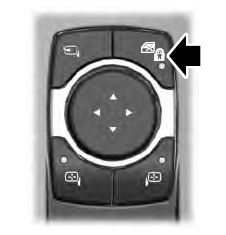Lincoln Aviator: Exterior Lighting / Diagnosis and Testing - Reversing Lamps
Diagnostic Trouble Code (DTC) Chart
Diagnostics in this manual assume a certain skill level and knowledge of Ford-specific diagnostic practices.
REFER to: Diagnostic Methods (100-00 General Information, Description and Operation).
Diagnostic Trouble Code Chart
| Module | DTC | Description | Action |
|---|---|---|---|
| BCM | B1277:11 | Reverse Lamp: Circuit Short To Ground | GO to Pinpoint Test A |
| BCM | B1277:15 | Reverse Lamp: Circuit Short To Battery or Open | GO to Pinpoint Test A |
Symptom Charts
Diagnostics in this manual assume a certain skill level and knowledge of Ford-specific diagnostic practices.
REFER to: Diagnostic Methods (100-00 General Information, Description and Operation).
Symptom Chart: Reversing Lamps
| Condition | Possible Sources | Actions |
|---|---|---|
| A module does not respond to the diagnostic scan tool |
|
REFER to: Communications Network (418-00 Module Communications Network, Diagnosis and Testing). |
| Both reversing lamps are inoperative or always on | Refer to the Pinpoint Test | GO to Pinpoint Test A |
| An individual reversing lamp is inoperative | Reversing lamp |
INSTALL a new reversing lamp. REFER to: Reversing Lamp (417-01 Exterior Lighting, Removal and Installation). |
Pinpoint Tests
.jpg) PINPOINT TEST A : BOTH REVERSING LAMPS ARE INOPERATIVE OR ALWAYS ON
PINPOINT TEST A : BOTH REVERSING LAMPS ARE INOPERATIVE OR ALWAYS ON|
Refer to Wiring Diagrams Cell 93 for schematic and connector information. Normal Operation and Fault Conditions
REFER to: Exterior Lighting - Overview (417-01 Exterior Lighting, Description and Operation). DTC Fault Trigger Conditions
Possible Sources
|
||||||||||
| A1 CHECK THE PCM (POWERTRAIN CONTROL MODULE) TRANSMISSION RANGE PID (PARAMETER IDENTIFICATION) | ||||||||||
Does the PID indicate the correct value in each gear selection?
|
||||||||||
| A2 CHECK THE REVERSING LAMP VOLTAGE CIRCUIT FOR A SHORT TO GROUND | ||||||||||
Is the resistance greater than 10,000 ohms?
|
||||||||||
| A3 CHECK THE REVERSING OUTPUT CIRCUIT FOR A SHORT TO GROUND | ||||||||||
Is the resistance greater than 10,000 ohms?
|
||||||||||
| A4 CHECK THE REVERSING LAMP VOLTAGE CIRCUIT FOR AN OPEN | ||||||||||
Is the resistance less than 3 ohms?
|
||||||||||
| A5 CHECK THE REVERSING LAMP VOLTAGE SUPPLY CIRCUIT FOR A SHORT TO VOLTAGE | ||||||||||
Are the reverse lamps still on?
|
||||||||||
| A6 CHECK THE REVERSING OUTPUT SUPPLY CIRCUIT FOR A SHORT TO VOLTAGE | ||||||||||
Is any voltage present?
|
||||||||||
| A7 CHECK FOR CORRECT BCM (BODY CONTROL MODULE) OPERATION | ||||||||||
Is the concern still present?
|
 Diagnosis and Testing - Parking, Rear and License Plate Lamps
Diagnosis and Testing - Parking, Rear and License Plate Lamps
Diagnostic Trouble Code (DTC) Chart
Diagnostics in this manual assume a certain skill level and knowledge of Ford-specific diagnostic practices. REFER to: Diagnostic Methods (100-00 General Information, Description and Operation)...
 Diagnosis and Testing - Stoplamps
Diagnosis and Testing - Stoplamps
Diagnostic Trouble Code (DTC) Chart
Diagnostics in this manual assume a certain skill level and knowledge of Ford-specific diagnostic practices. REFER to: Diagnostic Methods (100-00 General Information, Description and Operation)...
Other information:
Lincoln Aviator 2020-2025 Owners Manual: Ambient Lighting (If equipped)
Use the touchscreen to select the following: Select the settings option on the feature bar. Select ambient lighting. Switching Ambient Lighting On Touch a color once. Changing the Color Touch any color once. Adjusting the Brightness Drag the selected color up or down...
Lincoln Aviator 2020-2025 Service Manual: Removal and Installation - Glove Compartment
Special Tool(s) / General Equipment Interior Trim Remover Removal NOTE: Removal steps in this procedure may contain installation details. Release the clips and remove the finish panel. Use the General Equipment: Interior Trim Remover Release the clips and remove the switch...
Categories
- Manuals Home
- Lincoln Aviator Owners Manual
- Lincoln Aviator Service Manual
- Keyless Entry
- Changing the Front Wiper Blades - Vehicles With: Heated Wiper Blades
- Description and Operation - Jacking and Lifting
- New on site
- Most important about car
Child Safety Locks
When the child safety locks are set, you cannot open the rear doors from the inside.

The child safety lock control is on the driver door.
Press the control to switch the child safety locks on. Press the control again to switch them off. A light on the child safety control illuminates when you switch them on.

.jpg) PINPOINT TEST A : BOTH REVERSING LAMPS ARE INOPERATIVE OR ALWAYS ON
PINPOINT TEST A : BOTH REVERSING LAMPS ARE INOPERATIVE OR ALWAYS ON.jpg)
.jpg)